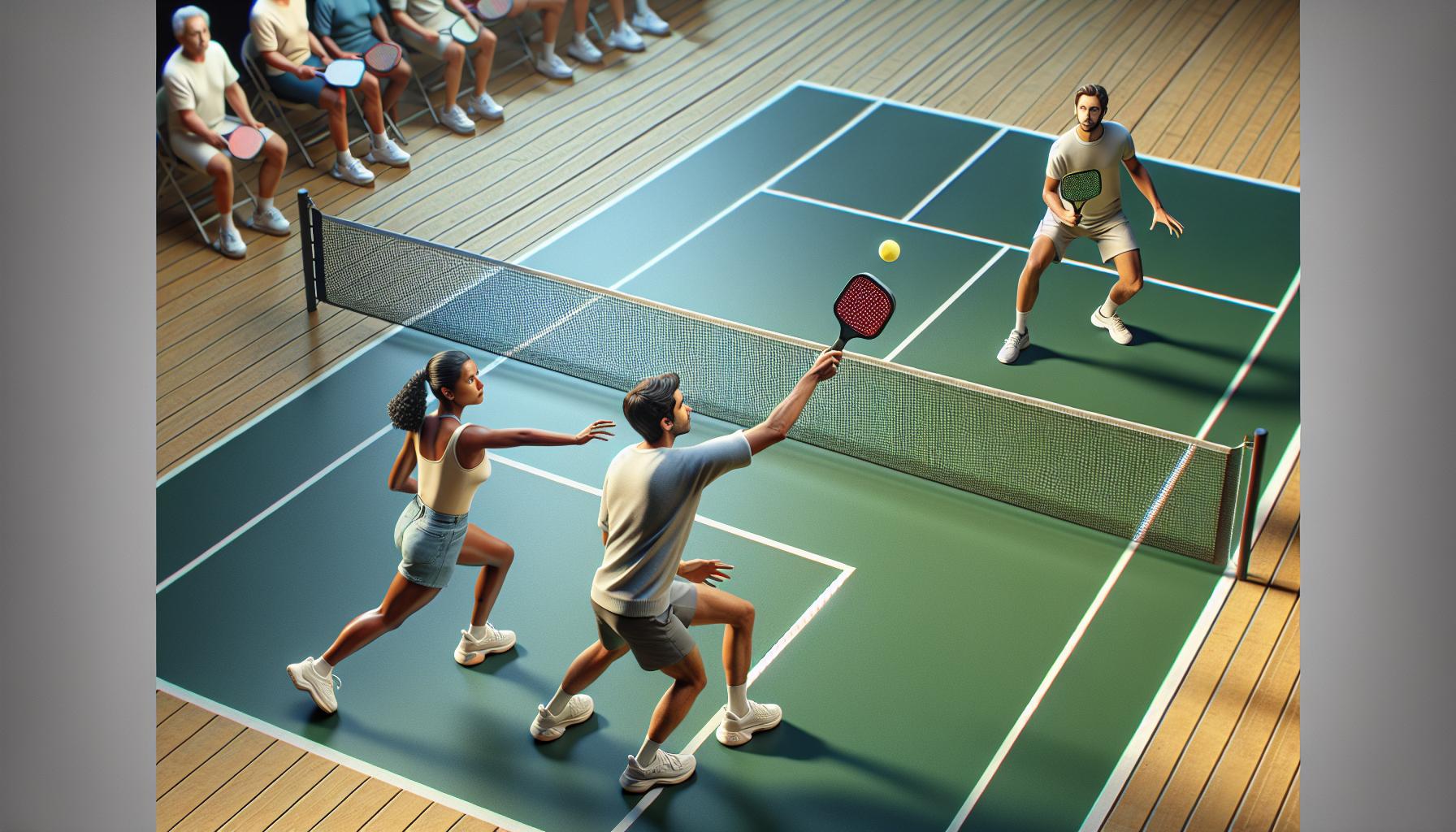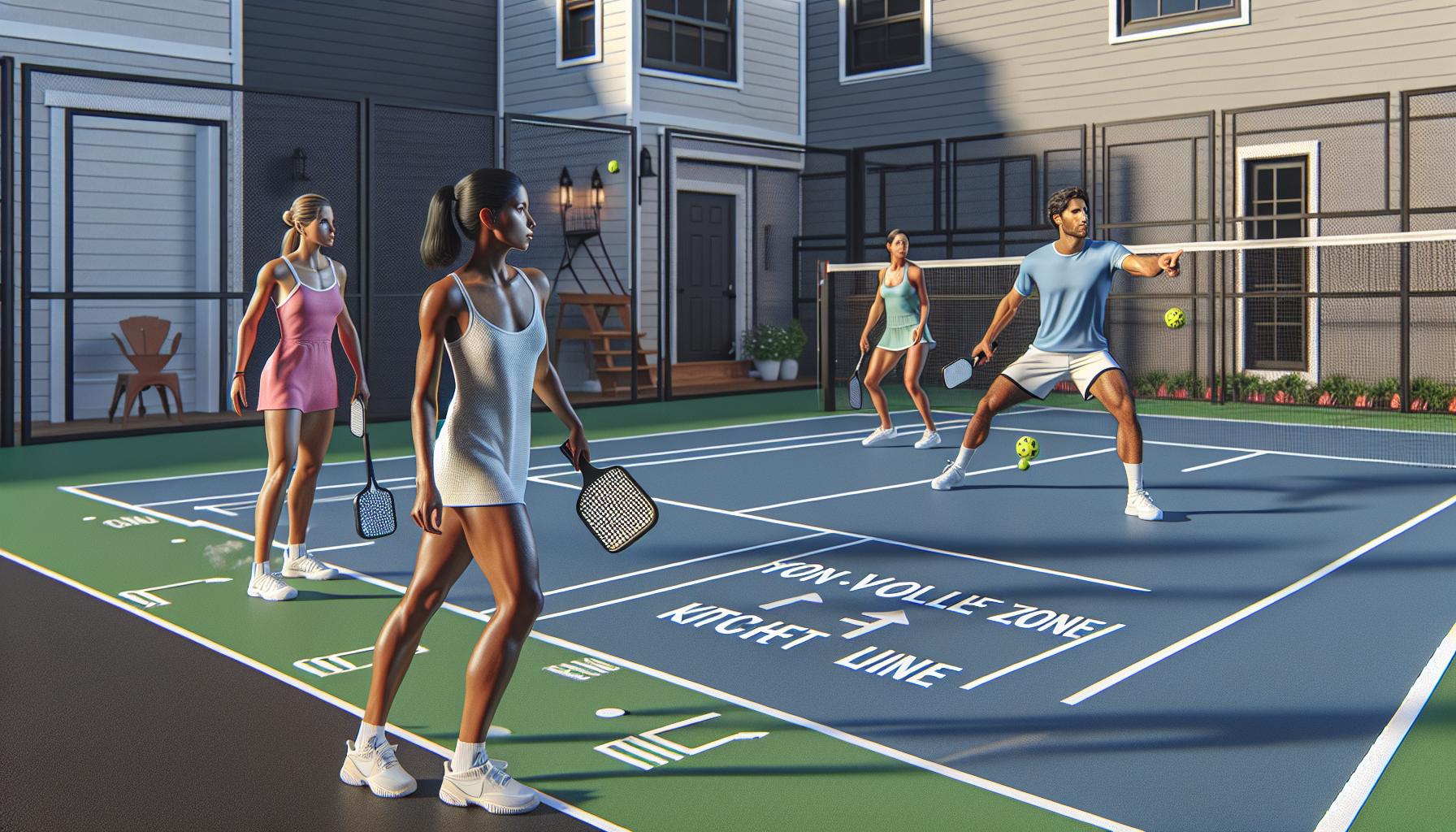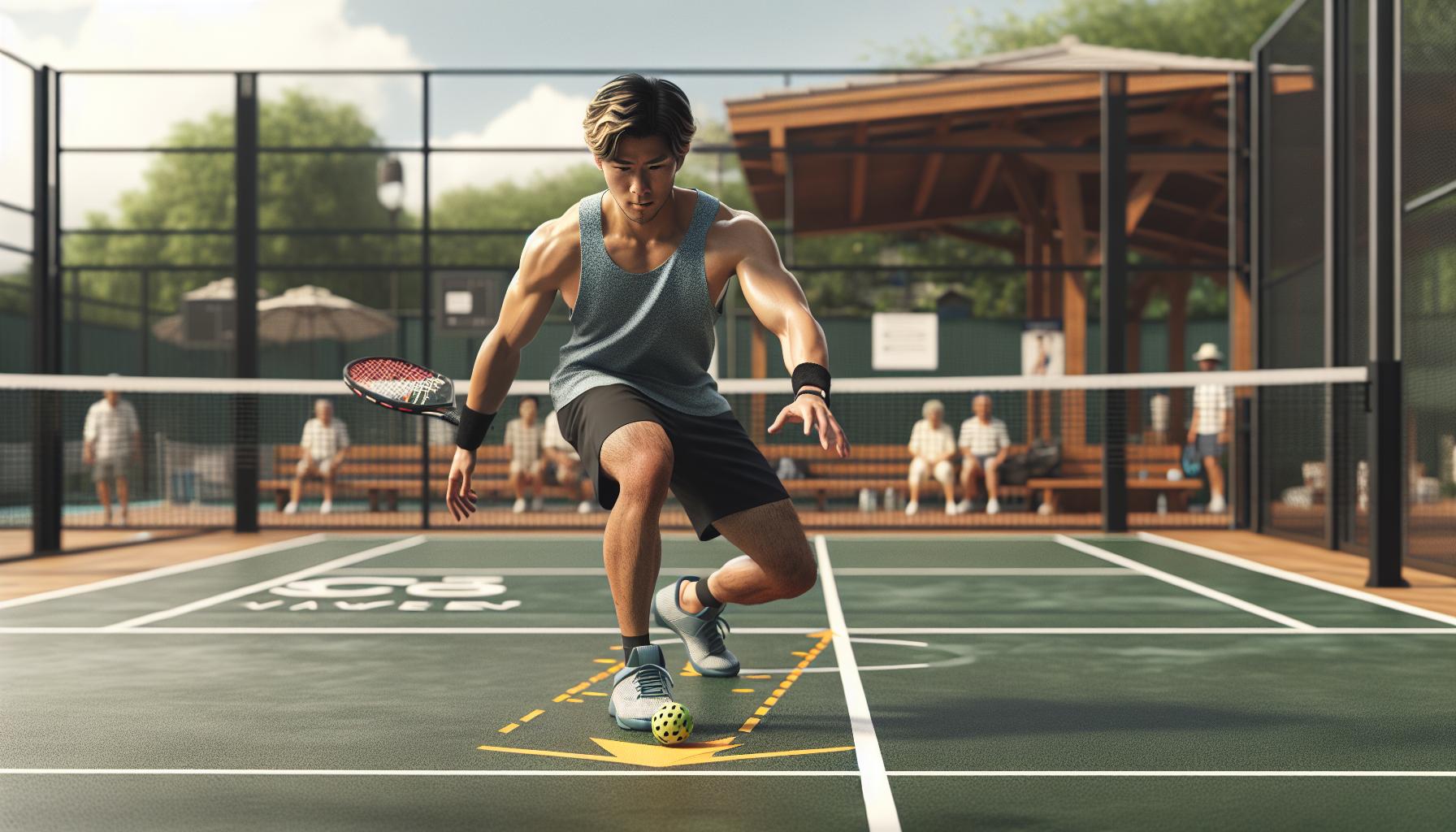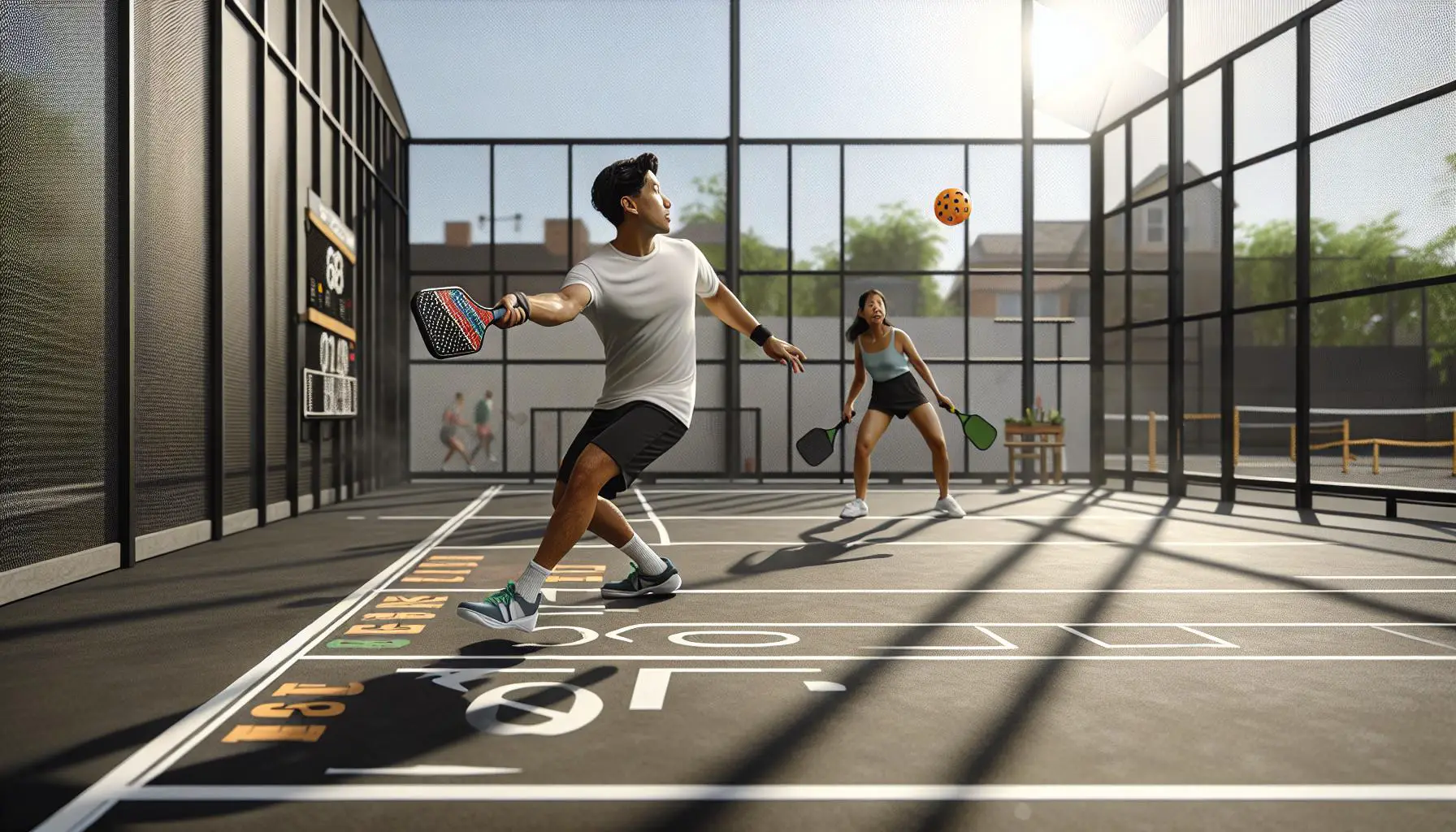Pickleball’s popularity is skyrocketing, and with it, the buzz about its unique rules, especially the kitchen rule. It’s a term that might puzzle newcomers, but it’s a crucial part of the game that can significantly impact play.
The kitchen rule isn’t about what you can whip up in terms of culinary delights; it’s a regulation that governs movement and strategy on the court. Understanding this rule is essential for anyone looking to step up their game and avoid common fouls. Let’s dive into the basics of the kitchen rule in pickleball and why it’s such a game-changer.
What is the Kitchen Rule in Pickleball?
In the fast-growing sport of pickleball, mastering the specifics of gameplay is essential for all players, ranging from beginners to seasoned competitors. Among the unique regulations that set pickleball apart is the kitchen rule, a guideline that influences both strategy and positioning on the court. Understanding this rule is not just about adhering to the sport’s standards; it’s about leveraging knowledge to enhance performance and enjoyment of the game.
The kitchen in pickleball refers to a seven-foot zone extending from the net on both sides of the court, formally known as the non-volley zone. The primary purpose of the kitchen rule is to prevent players from executing volleys—that is, hitting the ball before it bounces—while standing within this area. This rule encourages a playstyle where skill and precision are prioritized over sheer power, adding a layer of strategic depth to the game that is both challenging and rewarding.
To delve deeper, the kitchen rule dictates that players must allow the ball to bounce once if they find themselves within the non-volley zone. A volley from inside the kitchen is considered a fault, resulting in the loss of the point. However, the rule also stipulates that while players cannot volley from the kitchen, they may enter the zone to play a ball that has bounced. After playing a shot from within the kitchen, players must exit the area before attempting another volley, ensuring the game maintains a dynamic and fluid pace.
- The Ball Must Bounce: Players can enter the kitchen to hit the ball only after it has bounced once on their side of the court.
- Exiting the Kitchen: After hitting a ball from within the kitchen, a player must leave the area to avoid penalties on subsequent volleys.
- Faults and Penalties: Performing a volley from inside the non-volley zone results in a fault, which could turn the tide of the game.
Understanding the kitchen rule’s intricacies allows players to strategize effectively, planning their movements and shots with the rule’s boundaries in mind. It’s not just about avoiding penalties; it’s about crafting plays that respect the rule’s limitations while exploiting its tactical possibilities.
| Aspect | Detail |
|---|---|
| Zone Definition | A seven-foot zone from the net known as the non-volley zone or “the kitchen.” |
| Main Restriction |
Importance of the Kitchen Rule

The kitchen rule stands as a pivotal regulation in pickleball, not only shaping the pace of the game but also ensuring a level playing field among participants. Its significance can’t be overstated, as it introduces a strategic depth that requires players to think and act with precision. To understand why the kitchen rule is so crucial, one must consider both the defensive and offensive opportunities it creates.
Defensively, the rule encourages players to refine their skills in anticipation and control. Since the kitchen is a no-volley zone, players must develop the patience to wait for the ball to bounce before making a play, this enhances their ability to defend against aggressive shots. The challenge of quickly determining whether to let the ball bounce or to retreat and prepare for a different type of return adds a layer of tactical complexity.
Offensively, the kitchen rule opens up a variety of strategic plays. Players can exploit the non-volley zone by aiming shots that fall close to the net, forcing opponents into difficult positions. Precision becomes key, as hitting a ball too far or too soft could easily turn the tables in their opponent’s favor. The art of dinking, a soft shot that lands in the opponent’s kitchen, becomes a powerful tool in breaking down an opponent’s defense.
Moreover, the rule promotes fair play and safety. By prohibiting players from executing volleys within the kitchen, it prevents them from gaining an unfair advantage by standing too close to the net and smashing the ball downward. This ensures that all players have a fair chance to respond to volleys and maintains a safe distance between players to avoid potential collisions.
The strategic implications of the kitchen rule are numerous, affecting every aspect of gameplay. Players often find themselves devising intricate strategies to capitalize on their position relative to the kitchen. For instance:
- Lobbing over an opponent who is positioned too close to the kitchen line can force them to backtrack, potentially setting up an advantageous situation.
- Drop shots that land in the kitchen can draw opponents forward, making them vulnerable to subsequent shots aimed deeper into the court.
Understanding and mastering the dynamics of the kitchen rule can significantly elevate a player’s game. It’s not merely about obeying a regulation; it’s about integrating the rule into one’s strategic thinking. Players who adeptly navigate the constraints and opportunities presented by the kitchen often find themselves at a distinct advantage.
Strategies to Adhere to the Kitchen Rule

In pickleball, mastering the kitchen rule is more than just about understanding it—it’s about integrating it into your game. Players who excel find ways to transform this rule from a limitation into a strategic advantage. They incorporate specific strategies that allow them to adhere to the rule while still being aggressive and tactical during play.
Master the Art of Dinking
One of the most effective strategies is to master the art of dinking. This soft, controlled shot lands in the opposing team’s non-volley zone, making it difficult for them to return without stepping into the kitchen. Dinking isn’t just about keeping the ball in play; it’s about positioning, timing, and patience. Players who excel at dinking can keep their opponents on their toes, forcing them to play a more defensive game.
Develop Split-Second Decision Making
Adhering to the kitchen rule requires players to develop split-second decision making. Knowing when to volley and when to let the ball bounce takes practice and keen observation. Effective players have the ability to quickly assess the situation and decide the best course of action—whether that means stepping back to let a ball bounce or staying at the line ready to volley.
Utilize the Third Shot Drop
The third shot drop is another critical strategy in pickleball. After the serve and the return, the serving team often uses the third shot to execute a soft drop into the non-volley zone. This shot is designed to give the serving team time to approach the net and establish a position without violating the kitchen rule. Perfecting the third shot drop can significantly improve a player’s game, allowing them to transition from defense to offense smoothly.
Enhance Movement and Footwork
A player’s movement and footwork are essential in adhering to the kitchen rule while maintaining a competitive edge. Players must be agile, moving quickly and efficiently around the court to avoid foot faults. Developing a habit of split stepping—a small hop that players do before making a shot—improves balance and readiness, enabling better shot placement and rule adherence.
Common Mistakes Players Make with the Kitchen Rule

When it comes to playing pickleball, understanding and adhering to the kitchen rule is crucial for both newcomers and experienced players alike. However, even with the best intentions, mistakes are common, especially under the pressure of a fast-paced game. Recognizing these errors is the first step towards improvement.
Miscalculating the Non-Volley Zone
One of the most frequent errors involves miscalculating the boundaries of the non-volley zone, or the kitchen. Players often either underestimate or overestimate its limits, leading to unlawful volleys or missed opportunities to advance. This miscalculation not only disrupts the flow of play but can also result in point losses that could have been easily avoided.
Foot Faults
Another common mistake is committing a foot fault by stepping on or over the kitchen line while executing a volley. This error typically occurs during intense moments when players are so focused on hitting the ball that they lose track of their foot positioning. Constant awareness of one’s location in relation to the kitchen boundaries is essential to avoid these costly mistakes.
Forgetting the Two-Bounce Rule
The two-bounce rule is integral to the kitchen rule, requiring the ball to bounce once on each side of the net before volleys are allowed. Players often forget this rule in the heat of the moment, attempting to volley the ball prematurely. This not only violates the kitchen rule but also disrupts the game’s rhythm, making it crucial for players to remain vigilant about the rule at all times.
Overreliance on Power Shots
Many players mistakenly believe that power shots are the key to dominating the game, neglecting the strategic advantage of dinking and the third shot drop. This overreliance on force can lead them into the non-volley zone prematurely, resulting in avoidable faults. Incorporating a mix of power and finesse into one’s gameplay is vital for adhering to the kitchen rule while maintaining an offensive stance.
| Common Mistake | Description |
|---|---|
| Miscalculating the Non-Volley Zone | Players misjudge the kitchen’s limits, leading to unlawful volleys or missed advances. |
| Foot Faults | Stepping on or over the kitchen line while volleying, losing points due to location unawareness. |
| Forgetting the Two-Bounce Rule |
Mastering the Kitchen Rule to Improve Your Game

Pickleball, a sport that combines elements of tennis, badminton, and table tennis, has seen a significant surge in popularity. At the heart of this engaging game is the kitchen rule, officially known as the non-volley zone. This rule adds a unique strategic layer to pickleball, differentiating it from its racket sport cousins. Mastering the kitchen rule not only elevates a player’s game but ensures that they play by the book, avoiding unnecessary penalties.
The non-volley zone, or ‘the kitchen’, is a seven-foot area on either side of the net where players are not allowed to take a volley shot. Understanding and adhering to this rule requires precise footwork and spatial awareness. Players often struggle with strictly defining the boundaries of the kitchen. It’s crucial to remember that the kitchen extends all the way to the imaginary line extending from the sidelines. Entering this zone to volley can result in a fault, handing the advantage over to the opponent.
Practicing footwork drills that emphasize stopping before the kitchen line is an effective way to ensure compliance with this rule. Additionally, players should familiarize themselves with the two-bounce rule that complements the kitchen rule. This rule states that the ball must bounce once on each side of the net before volleys are allowed, further adding to the strategic depth of pickleball.
Incorporating finesse techniques such as dinking and the third shot drop can significantly boost a player’s effectiveness while adhering to the kitchen rule. Dinking, a soft shot that drops the ball just over the net into the non-volley zone, is a critical skill that forces opponents to approach the net, potentially setting them up for errors. The third shot drop is another finesse shot that, when executed correctly, can transition the serving team from a defensive to an offensive position without violating the kitchen rule.
To truly master the kitchen rule, players must also develop a keen sense of when to apply power and when to utilize finesse. Overreliance on power shots can make it difficult to control the ball and avoid kitchen faults. It’s a common misconception that pickleball is purely a power game. In fact, strategy and finesse often trump brute force. Below is a simple but effective strategy guide to maintaining balance:
| Strategy | Description |
|---|---|
| Footwork Drills |
Conclusion
Mastering the kitchen rule isn’t just about avoiding penalties—it’s about elevating your game to new heights. With the right footwork, spatial awareness, and a blend of power and finesse, players can navigate the non-volley zone like pros. Remember, practice makes perfect. So, lace up those sneakers, hit the court, and start incorporating those drills and strategies into your routine. Here’s to stepping up your pickleball game and enjoying every moment on the court!














0 Comments